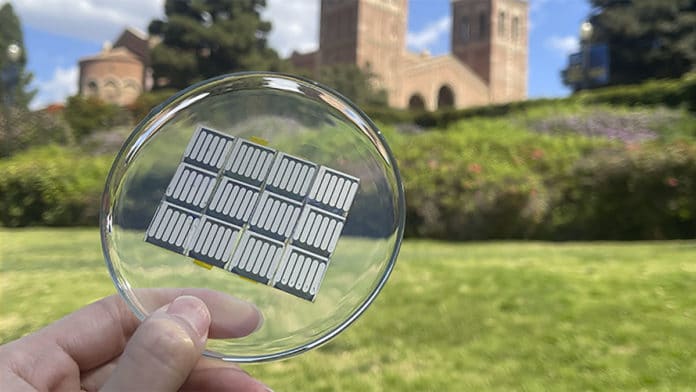Perovskite solar cells are emerging as a promising photovoltaic technology with high efficiency and low manufacturing cost, making solar energy technologies more accessible. But one of their major downsides is that the perovskite solar cells tend to degrade in direct sunlight much faster than their silicon counterparts, causing their performance to suffer over time.
Now, the UCLA researchers have found a simple manufacturing adjustment to fix the root cause of the degradation, clearing the biggest hurdle toward the commercialization and widespread adoption of the technology.
The common surface treatment used to remove solar cell defects involves depositing a layer of organic ions that makes the surface too negatively charged. The treatment is intended to improve energy-conversion efficiency during the fabrication process of perovskite solar cells. However, the UCLA-led team found that this treatment also unintentionally creates a more electron-rich surface – a potential trap for energy-carrying electrons to gather on the surface. This, in turn, destabilizes the orderly arrangement of atoms, and over time, the perovskite solar cells become increasingly less efficient.
The UCLA team addressed this issue by pairing the positively charged ions with negatively charged ones for surface treatments. The technique enables the surface to be more electron-neutral and stable while preserving the integrity of the defect-prevention surface treatments.
Researchers tested their solar cells in a lab under accelerated aging conditions and 24/7 illumination designed to mimic sunlight. Solar cells treated with the new technique managed to retain 87% of their original sunlight-to-electricity conversion performance for more than 2,000 hours – far better than the solar cells without the fix, which dropped the performance to 65%.
“Our perovskite solar cells are among the most stable in efficiency reported to date,” said Shaun Tan, the co-author of the study. “At the same time, we’ve also laid new foundational knowledge, on which the community can further develop and refine our versatile technique to design even more stable perovskite solar cells.”
